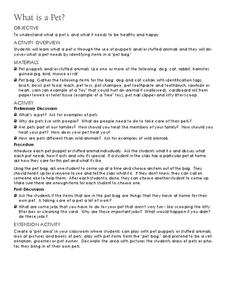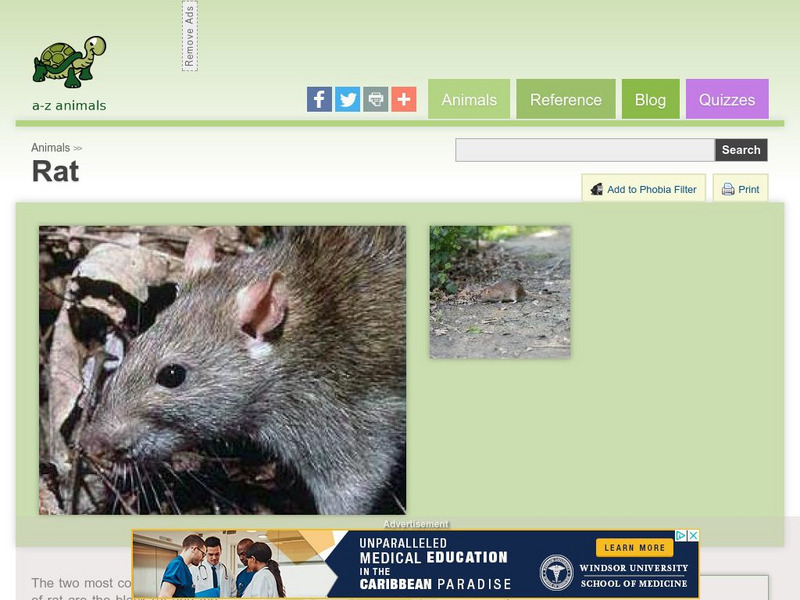Curated OER
Rat Round Up
Students build a device that captures and carries a pet rat safely back to its cage with out "harming" the rat or themselves. They build and experiment with wind-up or battery operated rat cat toys after predicting the outcome of their...
Curated OER
What is a Pet?
Learners define what a pet is and what it needs to be healthy and happy. They explore pets through the use of of puppets and/or stuffed animals and discover what a pet needs by identifying items in a "pet bag."
Curated OER
Rat-ional Pet Concerns
Students explore a recent salmonella outbreak in young students linked to pet rodents. They create pamphlets to help assist and inform pet owners about the disease and necessary health precautions.
Michigan State University
All About Rodents
Get to the know the common house mouse and the Norway rat with an activity that reinforces reading comprehension skills. Scholars read a three-page document detailing key information about mammals, specifically rodents, and use their...
Curated OER
Where Do Animals Live?
Students c;assify where pets live and where wild animals live and comprehend the differences. They investigate what kinds of homes pets and wild animals need. Students bring in a stuffed animal or puppet from home and match their...
American Museum of Natural History
Feed the Birds
What kinds of birds are common in the area? Young scientists use household supplies to create bird feeders. They then document the birds that come to their feeders by keeping journals.
American Museum of Natural History
Feed the Birds
Scholars use a large carton, string, an emery board, and bird food to create a hand-made bird feeder. After completing the craft, pupils keep a journal to track their observations.
Curated OER
Fearsome Creatures 1
In this wild animals instructional activity, students fill in the blanks or choose the correct words to sentences about wild animals. Students complete 47 blanks.
Curated OER
Scales, Scutes, and Skins
Young scholars identify the various adaptations of reptiles and amphibians. After distinguishing between reptiles and amphibians, students discuss the ways in which their adaptations aid in their survival. They participate in a hands on...
Curated OER
EPA Pesticides Reduction
Students examine the effects of pesticides on the environment and bugs. They answer questions as an assessment.
Curated OER
Learning about Snakes- Non-Fiction Reading Comprehension Worksheet
In this snakes non-fiction reading comprehension activity, 3rd graders read a one page selection about the characteristics of snakes. They complete a table which compares snakes to mammals, and fill in the blanks in 5 questions using...
A-Z Animals
A Z Animals: Animal Facts: Rat (Rattus Rattus)
Provides photographs and a fact card about common rats. Discusses where they are found, why they are seen as pests, predators, how humans use them for food and as pets, their life cycle, physical appearance, and diet.
Other
Lscmrc: Mice as Pets
This site gives good advice to mice lovers on how to handle and care for their pets.
Other
Evidence for Evolution: How Can Evolution Be Observed?
These pages are part of a site called Evolution that accompanies a textbook by the same name. Mark Ridley is the author. In this section, he describes how artificial selection has provided many examples of evolutionary change. Examples...















